Spectrum Summary: People's Resistance against British before 1857 | History for UPSC CSE PDF Download
| Table of contents |

|
| People’s Resistance: Meaning |

|
| Genesis of People’s Resistance |

|
| Civil Uprisings |

|
| Peasant Movements with Religious Overtones |

|
| Tribal Revolts |

|
| Sepoy Mutinies |

|
| Weaknesses of People’s Uprisings |

|
Before the 1857 Revolt, people in India were already showing signs of discontent against British rule by the East India Company. Various incidents indicated that not everyone was happy, leading to resistance in different parts of the country. The 1857 Revolt was a major outburst, but it wasn't the first expression of resentment against the alien rule.
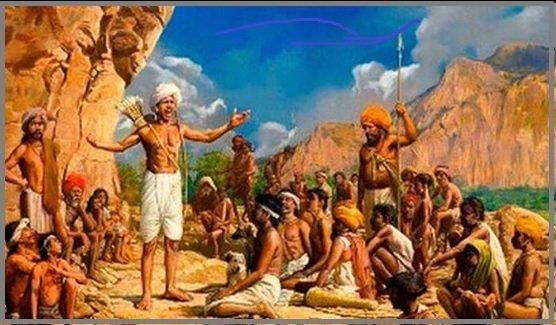
People’s Resistance: Meaning
- Diverse Sections of Society: People's resistance against British rule involved various sections of Indian society, including peasants, artisans, tribals, ruling classes (both active and dispossessed), military personnel under the East India Company, demobilized soldiers of ex-rulers, and religious leaders from Hindu and Muslim communities.
- Joint and Separate Movements: Different groups occasionally joined forces in their resistance. Examples include the 1810 agitation in Benares against a house tax, the 1814 Surat riots against salt duty, and the 1816 rising in Bareilly against police and municipal taxes. These movements included people from various social strata, such as artisans, petty shopkeepers, urban poor, and prosperous urban gentry.
- Divergent Grievances: While each section had distinct grievances, their common objective was to end British rule in India. The interests of these resistances varied, but they converged on the shared goal of liberation.
- Forms of Resistance: According to historian Bipan Chandra, people's resistance took three broad forms:
- Civil Rebellions: Uprisings in urban areas against specific colonial policies, like the examples mentioned in Benares, Surat, and Bareilly.
- Tribal Uprisings: Resistance movements involving tribal communities against British rule.
- Peasant Movements: Protests and uprisings by rural communities, primarily peasants, against oppressive British policies.
- Military Revolts: Military revolts were also considered a form of people's resistance. This involved Indians employed in the Company's forces who rebelled against the British. This inclusion aimed to provide a more comprehensive understanding of people's resistance during this period.
Genesis of People’s Resistance
- Pre-Colonial Protests: In pre-colonial India, people commonly protested against rulers and officials due to issues like high land revenue demands, corruption, and harsh behaviour by officials.
- Impact of Colonial Rule: The establishment of colonial rule had a severe impact on Indians. Colonial policies were destructive, and the British were primarily focused on extracting revenue without addressing the concerns of the people.
- Lack of Attention to Grievances: Under colonial rule, there was no one to listen to the grievances or pay attention to the problems of the Indian population. The Company's main interest was in collecting revenue.
- Biased Legal System: The colonial law and judiciary protected the interests of the government and its collaborators, such as landlords, merchants, and money-lenders. This system did not provide justice for the common people.
- Armed Resistance: Faced with no other options, the people chose to take up arms to defend themselves against the oppressive policies of the colonial rulers.
- The plight of Tribal People: The conditions of tribal people were similar to those in the mainland, but the intrusion of outsiders into their independent tribal polity made them more aggrieved and prone to violence. The encroachment intensified their sense of injustice and led to a more aggressive response.
Causative Factors for People’s Uprisings
The major factors responsible for the people’s resentment and uprisings against the Company rule are as follows.
- Colonial land revenue settlements, heavy burden of new taxes, eviction of peasants from their lands, and encroachments on tribal lands.
- Exploitation in rural society coupled with the growth of intermediary revenue collectors, tenants and money-lenders.
- Expansion of revenue administration over tribal lands led to the loss of tribal people’s hold over agricultural and forest land.
- Promotion of British manufactured goods, and heavy duties on Indian industries, especially export duties, led to the devastation of Indian handloom and handicraft industries.
- The destruction of indigenous industry led to the migration of workers from industry to agriculture, increasing the pressure on land/agriculture.
Civil Uprisings
- The term 'civil' in this context includes uprisings unrelated to the military. These rebellions were typically led by deposed native rulers, their descendants, former zamindars, landlords, and South Indian poligars. Poligars were holders of territory granted by rulers, like the Nayakas, in exchange for military service and tribute.
- The uprisings involved ex-retainers, officials of conquered kingdoms, and sometimes religious leaders. The main support came from rack-rented peasants, unemployed artisans, and demobilized soldiers. However, at the core of these movements were the once-powerful classes who had lost their authority and were now leading the resistance.
Major Causes of Civil Uprisings
- During the time of the Company rule, things changed a lot in how money, government, and land taxes worked, and it wasn't good for the people.
- Some landlords and local leaders, called zamindars and poligars, lost control over their land and money because of the new British rulers, and they were not happy about it.
- Regular landlords and leaders felt embarrassed because government officials, business people, and those lending money became more important than them.
- The British rules caused big problems for people who made things by hand, like craftsmen. They became poor because the people who used to buy their things, like princes and landlords, were not around anymore.
- The priests and religious leaders got upset with the British rule because they used to depend on the regular leaders. But now, with the leaders falling, it affected the priests too.
- The British rulers were from different place, and the way they treated the local people made the locals feel bad and hurt their pride.
General Characteristics of Civil Uprisings
- These uprisings, even though happening at different times and places, often shared common conditions.
- Leaders of civil uprisings were typically semi-feudal and had a traditional outlook. They aimed to bring back earlier forms of rule and social relations.
- These uprisings stemmed from local issues and grievances, and their impacts were mostly confined to specific regions
Important Civil Uprisings
1. Sanyasi Revolt (1763-1800)

- The disastrous famine in 1770 and tough British economic policies caused unrest in Eastern India.
- Sanyasis, originally peasants evicted from their land, led a rebellion against the British.
- Joined by small zamindars, disbanded soldiers, and rural poor.
- The sanyasis raided Company factories and treasuries, engaging in battles against the Company's forces.
- Major leaders included Majnum Shah, Chirag Ali, Musa Shah, Bhawani Pathak, and Debi Chaudhurani.
- Hindus and Muslims participated equally in the uprising, known as the Fakir Rebellion.
- Warren Hastings, after prolonged action, subdued the sanyasis.
- Debi Chaudhurani's participation highlighted the crucial role of women in early resistances against the British.
- Bankim Chandra Chattopadhyay's novels "Anandamath" and "Devi Chaudhurani" drew inspiration from the Sanyasi Revolt, emphasizing women's importance in resisting an alien rule threatening traditional Indian values.
2. Revolt in Midnapore and Dhalbhum (1766-74)
- The English gained control of Midnapore in 1760, where around 3,000 zamindars and talukdars had friendly relations with their ryots (peasant tenants).
- The harmonious scenario changed with the introduction of a new land revenue system by the English in 1772.
- British Governor Vansittart noted that the zamindars of Midnapore used to support the ryots in conflicts against English revenue officials.
- Zamindars in regions like Dhalbhum, Manbhum, Raipur, Panchet, Jhatibuni, Karnagarh, and Bagri, residing in the vast Jungle Mahals of west and north-west Midnapore, were eventually dispossessed of their zamindaries by the 1800s.
- Important leaders of the uprisings in response to this dispossession were Damodar Singh and Jagannath Dhal.
3. Revolt of Moamarias (1769-99)
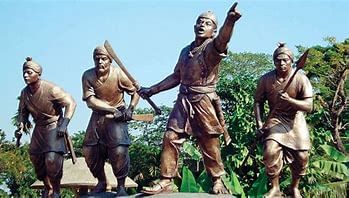
- The Moamaria revolt in 1769 challenged the authority of Ahom kings in Assam.
- Moamarias, low-caste peasants following Aniruddhadeva's teachings, rose similarly to other low-caste groups in North India.
- Their revolts weakened the Ahom rulers and made the region vulnerable to attacks, including the 1792 revolt by the King of Darrang.
- To suppress the revolts, the Ahom ruler sought British help.
- Moamarias established Bhatiapar as their headquarters, affecting regions like Rangpur and Jorhat.
- Despite surviving the revolt, the weakened Ahom kingdom fell to a Burmese invasion and later came under British rule.
4. Civil Uprisings in Gorakhpur, Basti, and Bahraich (1781)
- Warren Hastings aimed to generate funds for war expenses against the Marathas and Mysore.
- English officers, including Major Alexander Hannay, were involved as izaradars (revenue farmers) in Awadh in 1778.
- Hannay secured the izara of Gorakhpur and Bahraich, totaling 22 lakh rupees for one year.
- The Company's objective was a secret experiment to assess the practical accessibility of surplus money.
- Hannay's oppressive revenue demands caused panic and unrest in the region, previously flourishing under the Nawab.
- In 1781, zamindars and cultivators rose against Hannay's unbearable exactions, besieging or killing his subordinates.
- Although the rebellion was suppressed, Hannay was dismissed, and his izara was forcibly removed.
5. Revolt of Raja of Vizianagaram (1794)
- In 1758, a treaty was formed between the English and Ananda Gajapatiraju, ruler of Vizianagaram, to jointly remove the French from the Northern Circars. They succeeded, but the English, typical of their behavior in India, did not honor the treaty.
- Anand Raju, ruler of Vizianagaram, passed away before addressing the English breach of the treaty.
- The East India Company, contrary to the treaty, demanded a tribute of three lakh rupees from Vizayaramaraju, the succeeding Raja of Vizianagaram, and asked him to disband his troops.
- The demand angered the raja, as no dues were owed to the Company. The raja, supported by his subjects, revolted.
- In 1793, the English captured the raja and ordered him into exile with a pension, but he refused.
- The raja died in a battle at Padmanabham in 1794, and Vizianagaram came under the Company’s rule.
- Later, the Company offered the estate to the deceased raja’s son and reduced the demand for presents.
6. Revolt of Dhundia in Bednur (1799-1800)
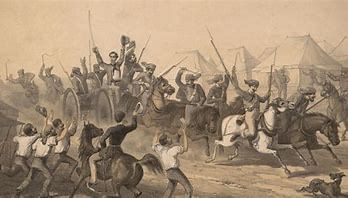
- After the conquest of Mysore in 1799, the English faced resistance from native leaders.
- Dhundia Wagh, a local Maratha leader converted to Islam by Tipu Sultan, was released from jail after the fall of Seringapatam.
- Dhundia organized an anti-British force and established a small territory for himself.
- A defeat by the English in August 1799 compelled him to seek refuge in the Maratha region.
- Dhundia instigated disappointed princes to fight against the English and assumed leadership.
- In September 1800, he was killed while fighting against British forces led by Wellesley.
- Despite his failure, Dhundia became a venerated leader among the masses.
7. Resistance of Kerala Varma Pazhassi Raja (1797; 1800-05)
- Kerala Varma Pazhassi Raja:
- Known as Kerala Simham or 'Pyche raja.'
- De facto head of Kottayam in Malabar.
- Fought against Hyder Ali, Tipu Sultan, and the British from 1793 to 1805.
- Third Anglo-Mysore War (1790-92):
- English violated the 1790 agreement, extending paramountcy over Kottayam.
- Vira Varma, Pazhassi Raja's uncle, appointed as Raja by the English.
- Mass Resistance (1793):
- The new Raja imposed exorbitant taxes on peasants to meet the Company's revenue target.
- Mass resistance led by Pazhassi Raja in 1793.
- Peace Treaty (1797): Pazhassi Raja fought bravely using guerilla warfare, leading to a peace treaty in 1797.
- Insurgent Warfare (1800): Conflict over Wayanad in 1800 reignited insurgent warfare.
- Organized Forces (1805): Pazhassi Raja organized a large force of Nairs, Mappilas, and Pathans (Tipu's demobilized soldiers).
- Death (November 1805): Kerala Simham died in a gunfight at Mavila Todu near the present-day Kerala-Karnataka border.
8. Civil Rebellion in Awadh (1799)
- Wazir Ali Khan, the fourth Nawab of Awadh, initially had British support but later clashed with them.
- His replacement by his uncle, Saadat Ali Khan II, resulted in Wazir Ali receiving a pension in Benares.
- The Massacre of Benares occurred in 1799 when Wazir Ali killed a British resident, leading to a conflict.
- After his defeat by General Erskine, Wazir Ali fled to Butwal and sought asylum in Jaipur.
- Arthur Wellesley requested Jaipur to extradite Wazir Ali under certain conditions.
- Wazir Ali surrendered in December 1799 and was confined at Fort William, Calcutta.
9. Uprisings in Ganjam and Gumsur (1800,1835-37)
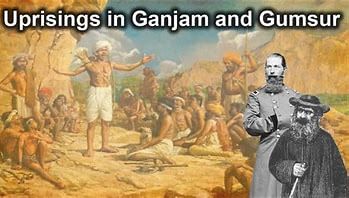
- Rebellion in Northern Circars, including Ganjam, against British rule.
- Zamindar Strikara Bhanj of Gumsur led the uprising, refusing to pay revenues in 1797.
- Open rebellion in 1800; oppressive collector Snodgrass replaced to suppress insurrection.
- Support from Jlani Deo and Jagannath Deo; Jagannath captured in 1804, districts assigned to Strikara.
- Dhananjaya Bhanj, Strikara's son, rebelled in 1807 and surrendered in June 1815.
- Strikara reappointed as Zamindar between 1819 and 1830 but retired due to arrears.
- Dhananjay's second rebellion in 1835 against the British occupation of Gumsur and Kolaida.
- Continued resistance after Dhananjay's death in December 1835, led by his followers.
- The government appointed Russell with discretionary powers in 1837 to quell the rebellion.
- Struggle persisted until February 1837, ending with the arrest of leader Doora Bisayi and forfeiture of Gumsur's zamindari.
11. Uprisings in Palamau (1800-02)
- In 1800, Bhukhan Singh, a Chero chief, rose in rebellion.
- Colonel Jones camped for two years in Palamau and Sarguja to suppress the rebellion.
12. Poligars’ Revolt (1795-1805)
- Between 1795 and 1805, the poligars (local rulers) in South India resisted British rule, with main uprisings in Tinneveli, Ramanathapuram, Sivaganga, Sivagiri, Madurai, and North Arcot.
- The conflict arose in 1781 when the Nawab of Arcot granted control of the Tinneveli and Carnatic Provinces to the East India Company, causing resentment among the poligars.
- The first revolt in 1795, led by Kattabomman Nayakan, centred around taxation and English treatment.
- After initial success, Kattabomman was betrayed, captured, and executed.
- The second phase in 1801 saw a violent rebellion, with Oomathurai and Marathu Pandian leading.
- North Arcot experienced a rebellion from 1803 to 1805 due to the denial of kaval fee collection rights. The widespread uprising suggested a belief in a mass movement against alien rule and a quest for independence.
13. Uprising in Bhiwani (1809)
- In 1809, the Jats of Haryana broke into rebellion.
14. Diwan Velu Thampi’s Revolt (1808-1809)

- The East India Company and Travancore agreed to work together in 1805, but the Company imposed tough rules that made the people in Travancore very unhappy.
- Travancore couldn't pay the money they were supposed to, and the British person in charge there was getting involved in their matters.
- Because of all these problems, the leader of Travancore, Velu Thampi, decided to rebel against the British. He openly asked people to fight against the British in what is now called the Kundara Proclamation. This made a lot of people join the rebellion, and the British had to use a big army to stop it.
- The Maharaja of Travancore, the local leader, didn't fully support the rebellion and joined the British side. Velu Thampi, to avoid being caught by the British, chose to end his own life.
- After this, the rebellion slowly went away, and things calmed down.
15. Disturbances in Bundelkhand (1808-12)
- The province of Bundelkhand was conquered by the British during the Second Anglo-Maratha Wars (1803-05) and placed within the Presidency of Bengal.
- Bundela chiefs resisted the new British government, fighting from nearly 150 forts.
- Lakshaman Dawa, the fort commander of Ajaygarh, offered the first major resistance. He was allowed to retain the fort temporarily until 1808 but surrendered in February 1809.
- The killadar of Kalanjar, Darya Singh, resisted in January 1812, but the rebellion was suppressed.
- Gopal Singh, a military adventurer with a dispute against his uncle supported by the British, posed a serious threat. He eluded British forces for four years.
- To quell disturbances, the British adopted a policy of binding down the hereditary chieftains of Bundelkhand through a series of contractual obligations known as Ikarnamahs.
16. Parlakimedi Outbreak (1813-34)
- When the Company acquired Ganjam, Narayan Deo was the raja of Parlakimedi whose resistance forced the British to dispatch an army under Colonel Peach.
17. Kutch or Cutch Rebellion (1816-1832)
- There was a treaty between the British and Maharaja Bharamal II of Kutch in 1816, by which power was vested in the throne.
- The British interfered in the internal feuds of the Kutch and, in 1819, Raja Bharmal II raised Arab and African troops with the firm intention of removing the British from his territory.
- A British resident governed the areas as the de facto ruler with the help of a regency council.
18. Rising at Bareilly (1816)
- The immediate cause of the upsurge was the imposition of the police tax which aroused the burning indignation of the citizens.
- Several armed Muslims from Pilibhit, Shahjahanpur, and Rampur rose in rebellion for the defence of the faith and the Mufti.
19. Upsurge in Hathras (1817)
- Due to progressively increasing revenues, Dayaram constantly failed to pay arrears and even committed many acts of hostility by giving harbour to government fugitives. So, the Company with a large army attacked Hathras in February 1817.
19. Paika Rebellion (1817)
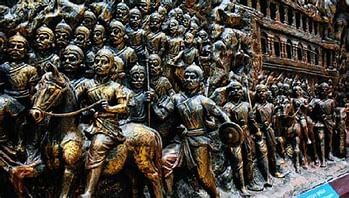
- Paiks in Odisha, a traditional militia with hereditary rent-free land tenures, saw a decline in power after the English Company's conquest in 1803.
- Resentment grew due to the Company's extortionist land revenue policy, affecting zamindars and peasants. Rising prices of salt and changes in currency added to grievances.
- Bakshi Jagabandhu Bidyadhar, military chief of the Raja of Khurda, led a rebellion in 1817 against the Company's actions, supported by Khonds and local zamindars.
- The Paika Bidroh spread across Odisha, with Jagabandhu becoming an outlaw. Despite initial success, the rebellion was brutally repressed by 1818.
- In 1825, Jagabandhu surrendered, achieving concessions such as remissions of arrears and reductions in assessments, reflecting elements of liberal governance.
20. Waghera Rising (1818-1820)
- Resentment against the alien rule coupled with the exactions of the Gaekwad of Baroda supported by the British government compelled the Waghera chiefs of Okha Mandal to take up arms.
- The Wagheras carried out inroads into British territory during 1818-19. A peace treaty was signed in November 1820.
21. Ahom Revolt (1828)
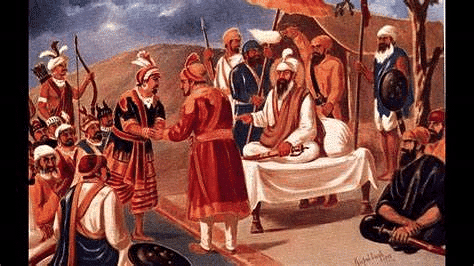
- After the First Burma War (1824-26), instead of withdrawing, the British attempted to incorporate the Ahoms’ territories into the Company’s dominion.
- This sparked off a rebellion in 1828 under the leadership of Gomdhar Konwar, an Ahom prince, along with compatriots.
- Finally, the Company decided to follow a conciliatory policy and handed over Upper Assam.
22. Surat Salt Agitations (1840s)
- A strong anti-British sentiment resulted in attacks by the local Surat population on the Europeans in 1844 over the issue of the government’s step to raise the salt duty from 50 paise to one rupee.
23. Kolhapur and Savantvadi Revolts
- Gadkaris, a hereditary military class, stationed in Maratha forts.
- Administrative reorganization in Kolhapur state post-1844 led to disbandment of Gadkari garrisons.
- Resulted in unemployment among Gadkaris.
- Faced with unemployment, Gadkaris revolted.
- Occupied Samangarh and Bhudargarh forts.
- Savantvadi areas experienced simmering discontent.
- Previous revolts against British rule in 1830, 1836, and 1838.
- British authorities introduced laws to control the region in response to the discontent.
24. Wahabi Movement
- The Wahabi Movement was essentially an Islamic revivalist movement founded by Syed Ahmed of Rai Bareilly who was inspired by the teachings of Abdul Wahab (1703-87) of Saudi Arabia and Shah Waliullah of Delhi.
- After the defeat of the Sikh ruler and the incorporation of Punjab into the East India Company’s dominion in 1849, the English dominion in India became the sole target of the Wahabi attacks.
- Wahabis played an important role in spreading anti-British sentiments. A series of military operations by the British in the 1860s on the Wahabi base in Sithana and various court cases of sedition on the Wahabis weakened the Wahabi resistance.
25. Kuka Movement
- The Kuka Movement was founded in 1840 by Bhagat Jawahar Mai (also called Sian Saheb) in western Punjab.
- Its basic tenets were the abolition of caste and similar discriminations among Sikhs, discouraging the consumption of meat alcohol and drugs, permission for intermarriages, widow remarriage, and encouraging women to step out of seclusion.
- On the political side, the Kukas wanted to remove the British and restore Sikh rule over Punjab; they advocated wearing hand-woven clothes and boycott of English laws and education and products. So, the concepts of Swadeshi and non-cooperation were propagated by the Kukas.
Peasant Movements with Religious Overtones
Peasant uprisings were protests against evictions, increases in the rents of land, and the moneylenders’ greedy ways, and their aim was occupancy rights for peasants among other things. They were revolts and rebellions of the peasants themselves though led by local leaders in many cases.
1. Narkelberia Uprising
- Mir Nithar Ali (1782-1831) or Titu Mir inspired the Muslim tenants in West Bengal to rise against landlords, mainly Hindu, who imposed a beard tax on the Faraizis, and British indigo planters.
- Often considered the first armed peasant uprising against the British later merged into the Wahabi movement.
2. The Pagal Panthis
- The Pagal Panthi, a semi-religious group mainly constituting the Hajong and Garo tribes of Mymensingh district (earlier in Bengal), was founded by Karam Shah.
- The tribal peasants organised themselves to fight the oppression of the zamindars. From 1825 to 1835, the Pagal Panthis refused to pay rent above a certain limit.
3. Faraizi Revolt
- The Faraizis were the followers of a Muslim sect founded by Haji Shariat-Allah of Faridpur in Eastern Bengal. They advocated radical religious, social and political changes.
- Shariat-Allah son of Dadu Mian (1819-60) organised his followers with an aim to expel the English intruders from Bengal. The sect also supported the cause of the tenants against the zamindars.
4. Moplah Uprisings
- A hike in revenue demand and reduction of field size, coupled with the oppression of officials, resulted in widespread peasant unrest among the Moplahs of Malabar.
- Twenty- two rebellions took place between 1836 and 1854.
5. Peasants’ Role in the 1857 Revolt
- The peasants united with the local feudal leaders in many places to fight against foreign rule. After the revolt, the plight of the peasants worsened with the British Government’s decision to gain the support of the landed classes while ignoring the peasants.
Tribal Revolts
Tribal movements under British rule were the most frequent, militant, and violent of all movements.
Different Causes for Mainland and North-Eastern Tribal Revolts:
- The mainland tribal rebellions were sparked off by the tribal lands or forests.
- The land settlements of the British affected the joint ownership tradition.
- As agriculture was extended in a settled form by the company government, the tribals lost their land, shifting cultivation in forests was curbed and this added to the tribal's problems.
- Exploitation by the police, traders, and money-lenders.
- Some general laws were also hated for their intrusive nature.
- The British entered the north-eastern areas much later than the non-frontier tribal areas.
- The frontier tribal revolts under the British continued for a longer time than the non-frontier tribal movements.
Characteristics of Tribal Revolts
- Tribal identity or ethnic ties lay behind the solidarity shown by these groups.
- The resentment against the imposition of laws by the “foreign government" that was seen as an effort to destroy the tribal's traditional socioeconomic framework.
- Many uprisings were led by messiah-like figures who encouraged their people to revolt.
- The tribal uprisings were doomed from the beginning, given the outdated arms.
Important Tribal Movements of Mainland
The frontier tribal areas were concentrated in central India, the west-central region, and the south.
1. Pahariya's Rebellion
- The British expansion on their territory led to an uprising by the martial Pahariyas of the Raj Mahal Hills in 1778.
- The British were forced to usher in peace by declaring their territory as damnikol area.
2. Chuar Uprising
- Famine-enhanced land revenue demands and economic distress goaded the Chuar aboriginal tribesmen of the Jungle Mahal of the Midnapore district and also of the Bankura district (in Bengal) to take up arms.
- The uprising lasted from 1766 to 1772 and then, again surfaced between 1795 and 1816.
- The Chuars were prominent in Manbhum and Barabhum, especially in the hills between Barabhum and Ghatsila.
3. Kol Mutiny (1831)
- The Kols, along with other tribes, are inhabitants of Chhota Nagpur. This covered Ranchi, Singhbhum, Hazaribagh, Palamau, and the western parts of Manbhum.
- The trouble in 1831 started with large-scale transfers of land from Kol headmen to outsiders.
- The British judicial and revenue policies badly affected the traditional social conditions of the Kols.
- The Kols resented this and in 1831, under the leadership of Buddho Bhagat.
4. Ho and Munda Uprisings (1820-1837)
- The Raja of Parashat organised his Ho tribals to revolt against the occupation of Singhbhum (now in Jharkhand).
- The revolt continued till 1827 when the Ho tribals were forced to submit, in 1831 organised a rebellion, joined by the Mundas of Chhota Nagpur, to protest against the newly introduced farming revenue policy and the entry of Bengalis into their region.
5. The Santhal Rebellion (1855-56)
- The continued oppression of the Santhals, an agricultural people, who had fled to settle in the plains of the Rajmahal hills (Bihar) led to the Santhal rebellion against the zamindars.
- The rebellion turned into an anti-British movement. Under Sidhu and Kanhu, two brothers, the Santhals proclaimed an end to Company rule and declared the area between Bhagalpur and Rajmahal as autonomous.
6. Khond Uprisings (1837-1856)
- From 1837 to 1856, the Khonds of the hilly tracts extending from Odisha to the Srikakulam and Visakhapatnam districts of Andhra Pradesh revolted against Company rule.
7. Koya Revolt
- The Koyas of the eastern Godavari track (modern Andhra), joined by Khonda Sara chiefs, rebelled in 1803, 1840, 1845, 1858, 1861, and 1862.
- Their complaints were oppression by police and moneylenders, new regulations, and denial of their customary rights over forest areas.
8. Bhil Revolts
- The Bhils who lived in the Western Ghats controlled the mountain passes between the north and the Deccan.
- They revolted against Company rule in 1817-19, as they had to face famine, economic distress, and misgovernment.
9. Koli Risings
- The Kolis living in the neighbourhood of Bhils rose in rebellion against the Company’s rule in 1829, and 1839 and again during 1844-48.
10. Ramosi Risings
- The Ramosis, the hill tribes of the Western Ghats, had not reconciled to British rule and the British pattern of administration.
- They rose under Chittur Singh in 1822 and plundered the country around Satara.
Tribal Movements of the North-East-Some famous tribal movements of the north-east frontier region
Some famous tribal movements of the northeast frontier region have been given below.
1. Khasi Uprising
- The Khasis, Garos, Khamptis, and Singphos organized themselves under Tirath Singh to drive away the strangers from the Brahmaputra Valley.
- The uprising developed into a popular revolt against British rule in the area.
2. Singphos Rebellion
- The rebellion of the Singphos in Assam in early 1830 was immediately quelled.
- Chief Nirang Phidu led an uprising in 1843, which involved an attack on the British garrison and the death of many soldiers.
- Some of the smaller movements were those of the Mishmis (in 1836), the Khampti rebellion in Assam between 1839 and 1842, and the Lushai's revolt in 1842 and 1844.
Sepoy Mutinies
A number of sporadic military uprisings took place before the Great Revolt of 1857 in different parts of the country.
Causes
- Discrimination in payment and promotions.
- Mistreatment of the sepoys by the British officials.
- Refusal of the government to pay foreign service allowance while fighting in remote regions.
- Religious objections of the high caste Hindu sepoys to Lord Canning’s General Service Enlistment Act (1856).
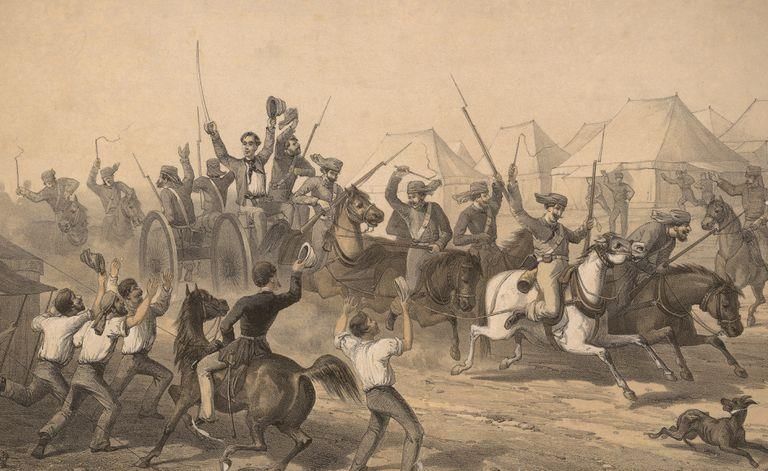
Examples of Conflicts
- In 1806, the replacement of the turban by a leather cockade caused a mutiny at Vellore.
- In 1844, there was a mutinous outbreak of the Bengal army sepoys for being sent to far away Sind.
- In 1824 the sepoys at Barrackpore rose in revolt when they were asked to go to Burma because crossing the sea would mean loss of caste.
Important Mutinies
The most important mutinies which broke out during the pre-1857 period are the following:
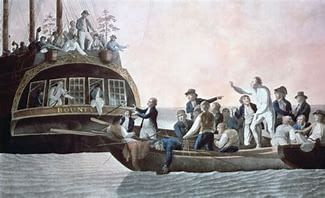
The most important mutinies which broke out during the pre-1857 period
- The mutiny of the sepoys in Bengal in 1764.
- The Vellore mutiny of 1806 was when the sepoys protested against interference in their social and religious practices and raised a banner of revolt unfurling the flag of the ruler of Mysore.
- The mutiny of the sepoys of the 47th Native Infantry Unit in 1824.
- The revolt of the Grenadier Company in Assam in 1825.
- The mutiny of an Indian regiment at Sholapur in 1838.
- The mutinies of the 34th Native Infantry (N.I), the 22nd N.I., the 66th N.I., and the 37th N.I. in 1844, 1849, 1850, and 1852 respectively.
Weaknesses of People’s Uprisings
- These uprisings drew a large number of participants, localised and occurred at different times in different regions.
- They mostly arose out of local grievances.
- The leadership was semi-feudal in character, backward looking, traditional in outlook and their resistance did not offer alternatives to the existing social set-up.
- If many of these revolts seemed similar to one another in wanting to oust the alien rule, it was because they were protesting against conditions that were common to them.
- These rebellions were centuries-old in form and ideological/cultural content.
- Those who were not so uncooperative or obstinate were pacified through concessions by the authorities.
- The methods and arms used by the fighters in these uprisings were practically obsolete compared to the weapons and strategy—as well as deception and chicanery—employed by their opponents.
As you have gathered knowledge about minor events that led to the first war of independence. In the next EduRev document you will read about the major events and about 1857 war which is considered as first fight for Indian independence and also the first signs of unity of the princely states against the common enemy that is the English East India Company.
|
110 videos|652 docs|168 tests
|
FAQs on Spectrum Summary: People's Resistance against British before 1857 - History for UPSC CSE
| 1. What is the meaning of People's Resistance? |  |
| 2. How did the People's Resistance against British colonialism begin? |  |
| 3. What were some examples of People's Resistance in India before 1857? |  |
| 4. What were the weaknesses of People's Uprisings against the British? |  |
| 5. How does People's Resistance relate to the UPSC exam? |  |
















